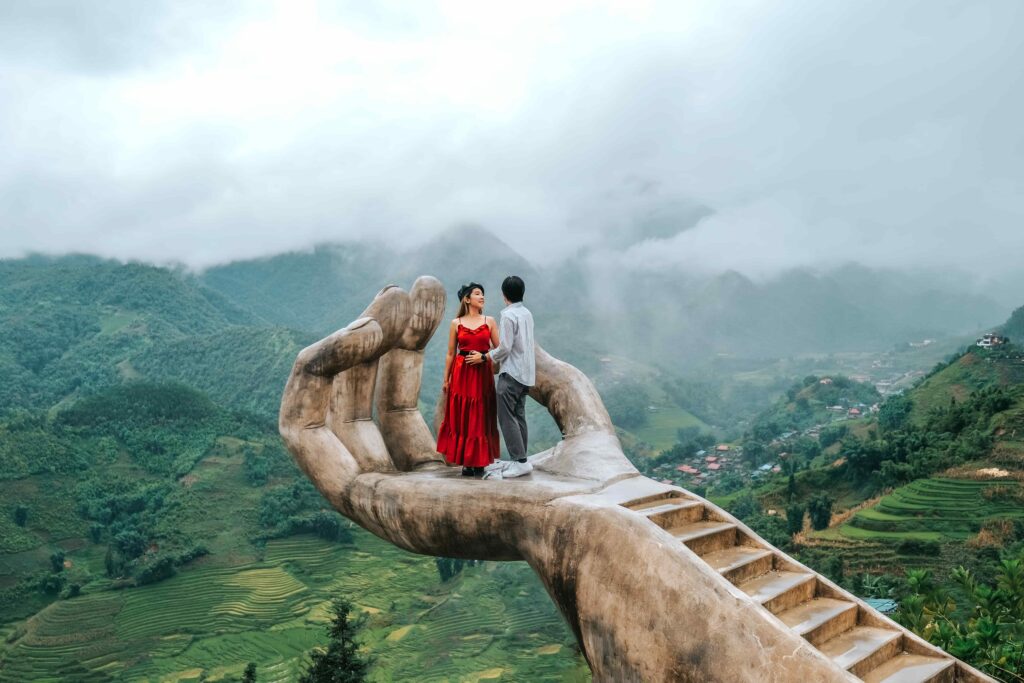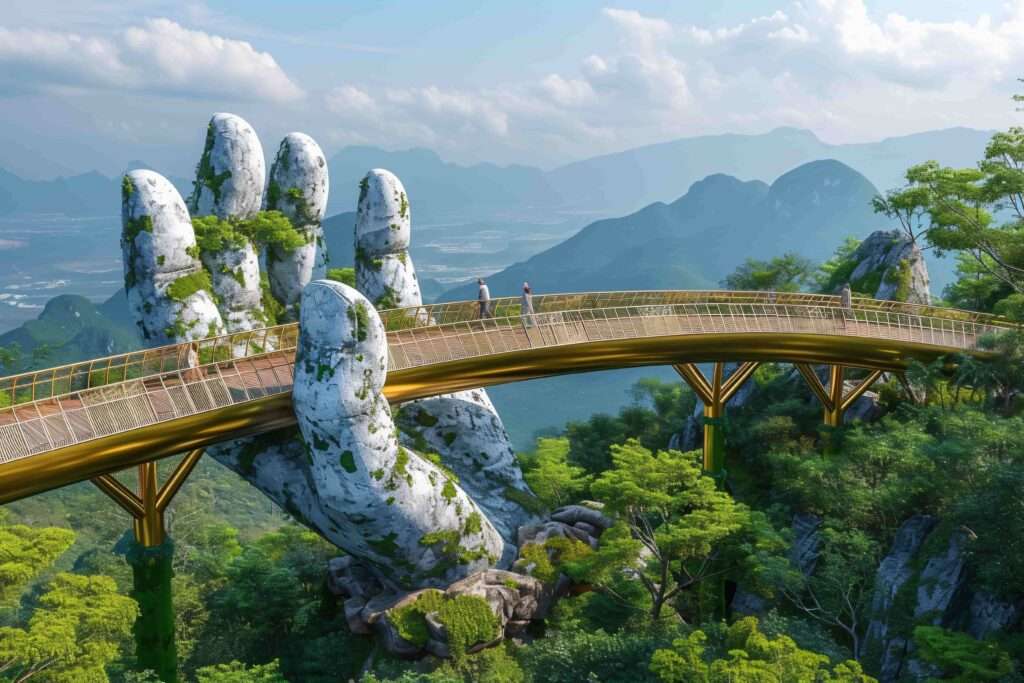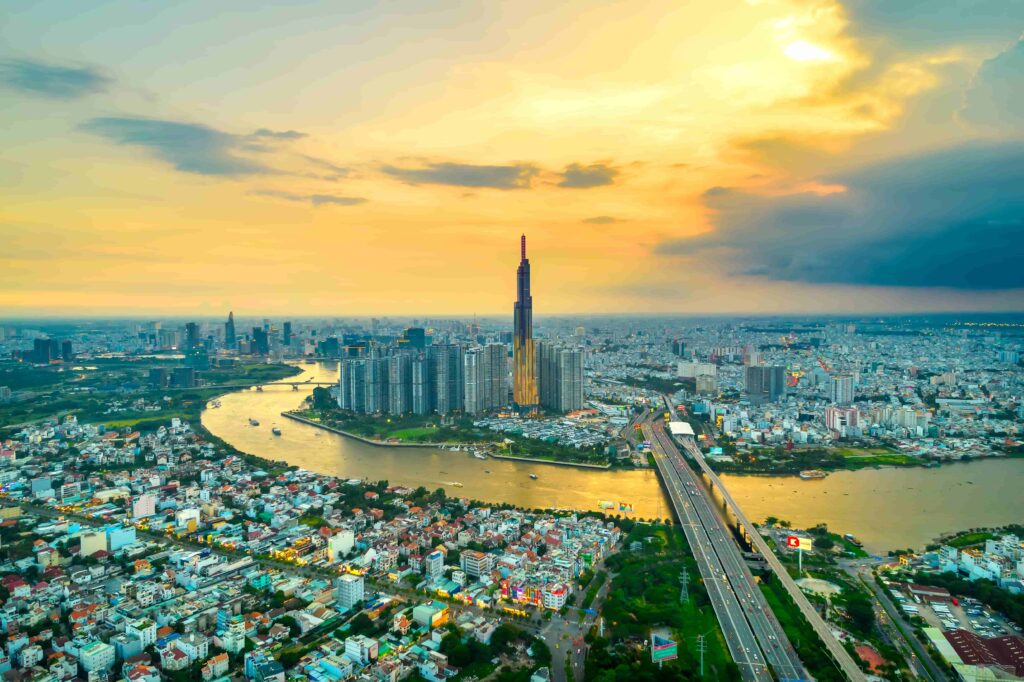Table of Contents
1. Vietnam’s Climate and Travel Seasons
Vietnam is a land of varied landscapes stretching from tropical in the south to temperate in the north, thus ensuring that weather patterns in Vietnam vary tremendously throughout the year. To know the seasonal changes in the country is important to determine when would be best months to visit Vietnam.
Peak Tourist Season: November to April
If you like pleasantly cool weather and dry weather, the best time to visit Vietnam is from November to April. This time of the year is characterized by cool weather in the north and bright, sunny days in the south.
- Hanoi & Northern Vietnam: Cool and dry days in the winter months from November to February make historical tours enjoyable in the Old Quarter, Sapa, and Ha Long Bay.
- Central Vietnam (Hue, Da Nang, Hoi An): Pleasant temperature with less rain allows wonderful beach and culture tours.
- Southern Vietnam (Ho Chi Minh City, Mekong Delta): City tours, river cruises, and island hopping are best suited to the dry season weather.
Shoulder Seasons: May to October
May to October are lazy travel months so that good bargains on hotel rooms can be found during these times. Plan for rain showers now and then.
- Northern Vietnam: It is hot and humid during summer, ideal for trekking in Sapa just before the heavy downpours of monsoon.
- Central Vietnam: Higher rainfall from September to November affects Hue and Hoi An.
- Southern Vietnam: Monsoon rain prevails, but showers are usually of short duration, followed by sunshine.
Monsoon Season: July to September
The rainy season of Vietnam is from July to September, during which the rain comes pouring down for days or hours on end, especially in the central and southern regions.
- Flood-Risk: Flooding may happen in coastal or low-lying areas like Hoi An and Mekong Delta.
- Travel Benefits: The rains add to the manifold beauty for nature lovers around; in addition, hotels charge lower prices.

2. Best Time to Go: Enjoy Different Areas Around Vietnam
As the weather patterns across Vietnam vary from region to region, it becomes even more necessary to consider every area separately for your Vietnam travel guide.
Northern Vietnam (Hanoi, Ha Long Bay, Sapa)
- Best Time: October to April (cool, dry)
- Avoid: June to August (highly humid with rains)
- Holidays: Tet Festival (January/February); Mid-Autumn Festival (September/October).
Central Vietnam (Hue, Da Nang, Hoi An)
- Best Time: February to August (beach season, cultural festivals)
- Avoid: September through November (typhoon season).
- Holidays: Hoi An Lantern Festival: every full moon.
Southern Vietnam (Ho Chi Minh City, Mekong Delta, Phu Quoc)
- Best Time: November to April (sunny and dry)
- Avoid: June to September (heavy rainfall, high humidity)
- Special Events: Tet Nguyen Dan (Lunar New Year), Dalat Flower Festival.

3. Best Times for Different Activities in Vietnam
When drawing up your Vietnam itinerary, the time of year for your choice of activities is important.
Best Time for Trekking in The Northern Highlands and Sapa
Ideal Months: September through November (temperate cool season, golden-yellow rice terraces)
Alternative: March through May (lush green landscapes with pleasant weather)
Avoid: June through August (rainy season with landslides being possible)
Best Time to Sightsee in Hanoi and Ho Chi Minh City
Ideal Months: November through March (comfortable, no oppressive heat)
Avoid: June through August (highly hot days with occasional downpouring)
Best Time for Beaches and Islands
Best Beach Destinations: Da Nang, Nha Trang, Phu Quoc, Con Dao
Best Time: February through August (crystal-clear waters and warm sunshine)
Avoid: September through November (helping in central Vietnam with monsoon risks)
4. Best Times for Cultural Festivals
Vietnam has maintaining along fascinating cultural festivals that can significantly enhance your journey.
Tet Nguyen Dan (Lunar New Year): January/February- Celebrations throughout Vietnam.
Mid-Autumn Festival: September/October- Lantern parade, mooncakes, and families gathering.
Hoi A Lantern Festival: Every full moon- A mystical night of floating lanterns on the Thu Bon River.

5. Tips Working with The Best Time to Travel to Vietnam
For Best Weather: November to April is great for almost all of the regions.
For budget travelers: May to October mean lower rates for hotel accommodation and flights.
To Avoid Crowds: Go for shoulder seasons (March-May, September-November).
Festival and Culture: Planning around Tet (Lunar New Year) is recommended, but accommodations should be booked early.
conclusion
Traveling to Vietnam at any time is dependent on one’s priority. If one needs good weather, the months suitable would be between November and April. For an economic trip, the best would be during the shoulder season. Just any time, Vietnam’s history and culture, scenic beauty, and warm hospitality will charm and make the trip worthy of remembering.
Frequently Asked Questions
1. What is the worst time to visit Vietnam?
The worst time to visit Vietnam is during the rainy season (July to September), especially in central and southern regions due to typhoons and flooding risks.
2. Is Vietnam hot all year round?
Vietnam has tropical and temperate climates, meaning the south is warm year-round, while the north experiences colder months (November to February).
3. Can I visit Vietnam in the summer?
Yes, but expect hot and humid conditions, especially in the north and south. Central Vietnam remains a good choice from May to August.
4. Is Vietnam expensive during peak season?
Yes, flights, accommodations, and tours are more expensive from December to February due to increased demand.
5. Are beaches in Vietnam good year-round?
No, the best beach weather is from February to August. Avoid central Vietnam’s beaches from September to November due to typhoons.
6. Is Tet a good time to visit Vietnam?
Tet (Lunar New Year) is a great time to experience Vietnamese culture, but many businesses close, and prices rise. Book early if visiting during Tet celebrations.

